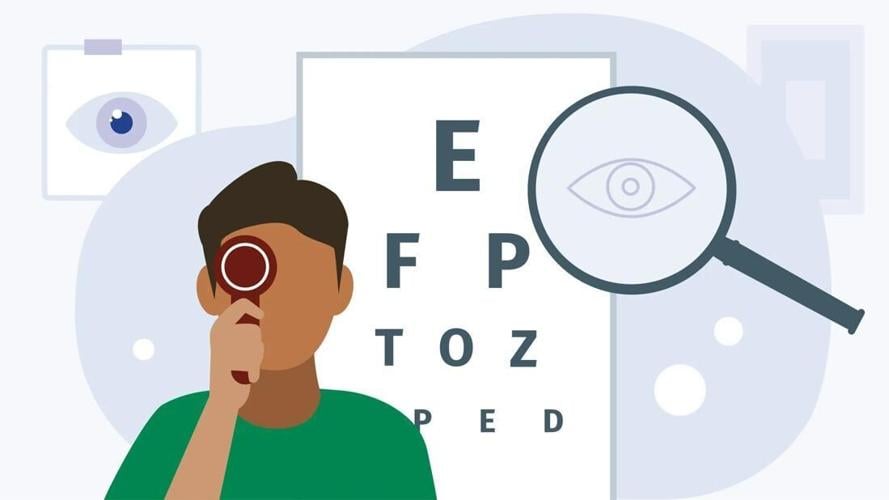
We take our eyesight for granted until we have difficulty seeing, even though it is crucial to our survival.
The methods used to evaluate eyesight have been revolutionized by a number of healthcare technology advances brought about by medical screening devices. Quick, accurate, and minimally intrusive examinations made possible by medical screening equipment can detect early signs of eye disorders and help keep eyes healthy over the long term.
Previous versions of eye exams relied heavily on proficiency tests and lamps; however, technological developments in the field have now rendered these tools obsolete.
Modern screening tools allow ophthalmologists and optometrists to conduct exams with a high degree of precision, allowing them to identify problems in their earliest, symptom-free phases. Medical technologies that screen vision are examined in this article, along with their operational methods and efficiency metrics. The article explains how these devices will impact future vision healthcare.
The Role of Medical Screening Devices in Modern Eye Exams

Medical vision exams make use of specialized technology that can detect, assess, and monitor the eyes' health and functional state. Medical screening equipment provide a wealth of information on the optic components and the functional features of the eye to eye doctors, in addition to medical prescriptions.
These gadgets shorten testing times, generate accurate data for sophisticated eye exams, and eliminate medical errors thanks to their digital imaging capabilities and automated systems. These gadgets have made previously unattainable tasks, such as the exact diagnosis of glaucoma symptoms, retinal scans, and assessments of refractive error, easier. Discover more here https://www.scmp.com/lifestyle/health-wellness/article/3295083/what-amd-eye-condition-could-cause-blindness-and-only-eye-test-can-detect-it.
How These Devices Perform Excellent Eyesight Testing
Here’s what you need to know:
Accurate Measurement of Refractive Errors
Myopia, hyperopia, astigmatism, and presbyopia are the four main types of refractive abnormalities that can be detected during an eye exam. The autorefractor and wavefront aberrometer are medical screening tools that measure the ocular lens's bending angle.
In contrast to the time-consuming process of trial-and-error lens testing, these instruments may quickly and accurately determine an individual's prescription. People who have problems articulating their visual acuity, such as children, the elderly, or those with impaired eyesight, may find this particularly useful.
Digital Retinal Imaging
Optometrists may now take high-resolution pictures of the back of the eye's retina, optic nerve, and blood vessels with the use of fundus photography and digital retinal cameras. Diabetes retinopathy, macular degeneration, and retinal detachment are just a few of the many eye diseases that these high-resolution pictures aid in detecting.
This method's strength lies in its capacity to facilitate longitudinal baseline comparisons. At subsequent appointments, the doctor can evaluate the patient's progress by comparing pre- and post-treatment pictures.
Optical Coherence Tomography (OCT)
Optical coherence tomography (OCT) is a cutting-edge imaging tool for contemporary ocular health. It creates cross-sectional pictures of the retina using light waves, showing minute detail of the eye's tissue layers. Conditions including as glaucoma, macular edema, and optic nerve damage can be detected with this technology, and it is essential for doing so—often before symptoms show up.
Regular and specialist eye exams both make use of OCT due to its non-invasiveness and remarkable accuracy. It aids in the detection process, which can halt or lessen the severity of several eye illnesses if caught early.
Visual Field Examination
Automatic visual field testing equipment are lifesavers when it comes to diagnosing neurological disorders, glaucoma, and other illnesses that impact peripheral vision. These screening tests assess a person's peripheral vision, or their ability to see objects beyond their immediate line of sight, as well as their depth perception.
Medical screening equipment can pinpoint the exact location of visual loss with quantifiable data. As a result, eye specialists are better able to spot patterns of deterioration and take measures to protect their patients' remaining vision.
Pediatric Eye Exams and Photoscreeners
When children are having problems seeing, they may not always be able to express themselves. This is when pediatric vision screens and photo screeners with handheld capabilities come into play. The use of these handheld screening devices allows for the early detection of refractive defects, lazy eye, strabismus (crossed eyes), and other eye conditions in children in a matter of seconds.
Schools, pediatric offices, and community screenings are ideal settings for these instruments because they allow for the rapid testing of numerous children and, if necessary, the referral to additional care.
Advantages of Using Medical Screening Devices for Vision
These instruments make a 30-minute eye test much faster. This allows more patients to be seen and faster care for urgent cases.
Medical screening devices eliminate guesswork and human interpretation for accurate results. This ensures evidence-based treatment strategies and reduces the risk of misdiagnosis.
Many eye disorders proceed slowly and painlessly, so early detection is crucial. Better screening techniques can detect issues before they display symptoms. You can improve the result and save your vision by acting quickly. Read more on this page.
More and more, portable screening devices are being used in rural or underserved areas to give people who might not normally be able to get eye care access to professional-level eye exams. Some devices can even connect to telemedicine platforms, which lets doctors look at the data from afar.





(0) comments
We welcome your comments
Log In
Post a comment as Guest
Keep it Clean. Please avoid obscene, vulgar, lewd, racist or sexually-oriented language.
PLEASE TURN OFF YOUR CAPS LOCK.
Don't Threaten. Threats of harming another person will not be tolerated.
Be Truthful. Don't knowingly lie about anyone or anything.
Be Nice. No racism, sexism or any sort of -ism that is degrading to another person.
Be Proactive. Use the 'Report' link on each comment to let us know of abusive posts.
Share with Us. We'd love to hear eyewitness accounts, the history behind an article.